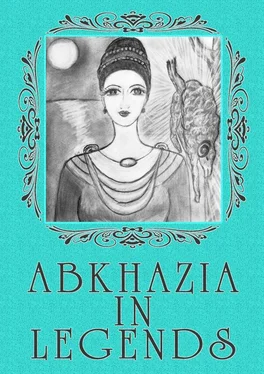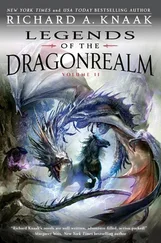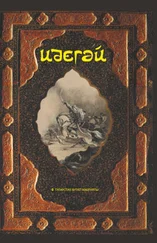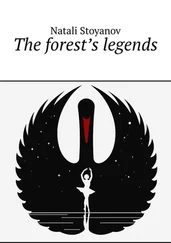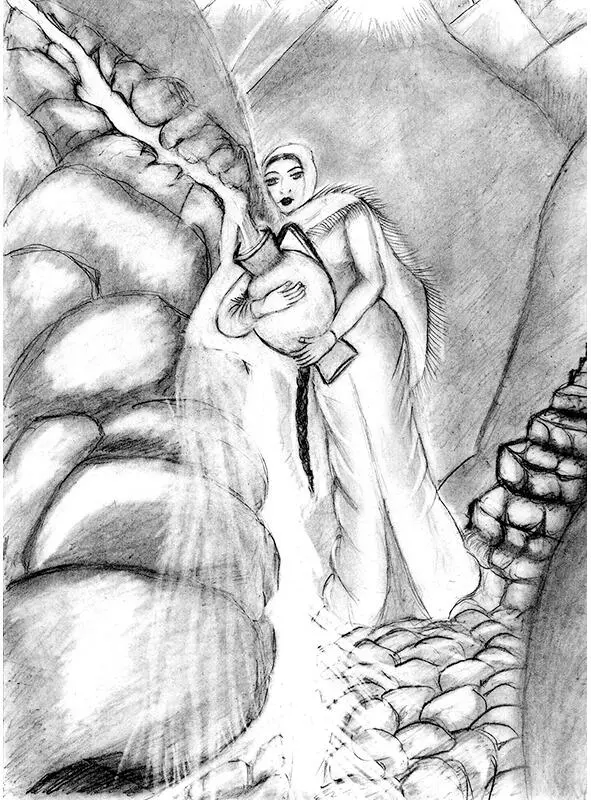
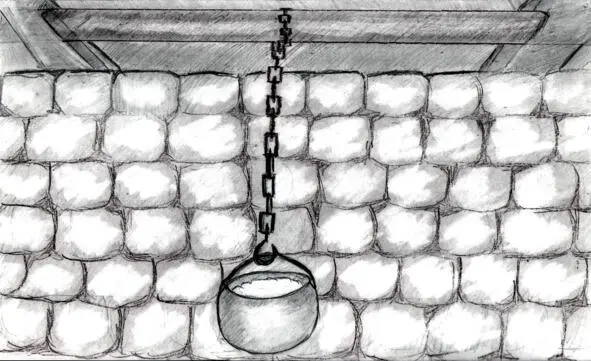
The way of life, mentality, morals, customs, and religious practices of different ethnic groups of the Caucasus (including the Abkhazians) have found reflection in the ancient Caucasian Nart epic. The background of the Nart epic has been traced to the pre-literate Heroic Age of the Caucasian people. Archaeological evidence confirms the date of the core of the Caucasian Nart epic to be circa 800—700 BC.
The Abkhazian Nart epic family consists of the mother Satanay Gwasha, her 99 sons and an only daughter Gunda the Beautiful, who live in a huge home built of stone and copper. During their campaigns the Narts dwell in caves. In the middle of the Nart house, a huge copper cauldron hangs from the ceiling-beam over the fire in the hearth. The Narts have a long bench capable of accommodating all of them at a single sitting.
Satanay Gwasha is the central figure of the Abkhazian epic tales. She is an ageless, mighty giantess of striking beauty, progenitrix of the whole nation, a wise and independent woman, possessing the gift of foresight. Satanay cares for her 100 children, especially for Sasryqwa, the youngest and best-loved son.
About the Apswara and religion
A code of etiquette known as “Apswara” which includes traditions respecting age, hospitality, eloquence, bravery is instilled in the Abkhazians along with their mothers’ milk and handed down from parents to offspring generation by generation. The word Apswara means “to be Abkhazian”.
The etiquette and norms of behaviour reflected in the Nart epic have long become established and deeply ingrained. The Nart epic tales also tell of the etiquette of the table followed by the Narts: “The Narts would come into their house one by one following the order of seniority. Then, they would take their seats at the table and make a toast to their mother, praising her to the skies. Meanwhile, the younger brothers would serve the elder ones at table…”.
Although the Abkhazians are divided into Christians and Moslems, there is no religious antagonism among them. The culture of religious tolerance is traditional. Even after the adoption of Christianity or Islam, almost all the Abkhazians have also kept alive their old traditional (pagan) faith, which has been the most widely practised religion in the community since ancient times.
One of the Nart epic tales narrates how Satanay Gwasha, the Mother of the Narts, aided by her gift of foresight, found out that her sons had got into trouble. Having raised her hands to the sky, and turning to Shashyu, the Blacksmith’s patron, pleaded with him for protection: “Oh, Almighty Shashyu, let my sons come back home alive and unharmed! I am obligated before You to light a hundred candles in the Land of Heaven and raise hundreds of sheep for sacrifice”. On hearing Satanay Gwasha’s pleas, Shashyu drew the sides at war apart.
Legend of Satanay Gwasha’s spindle
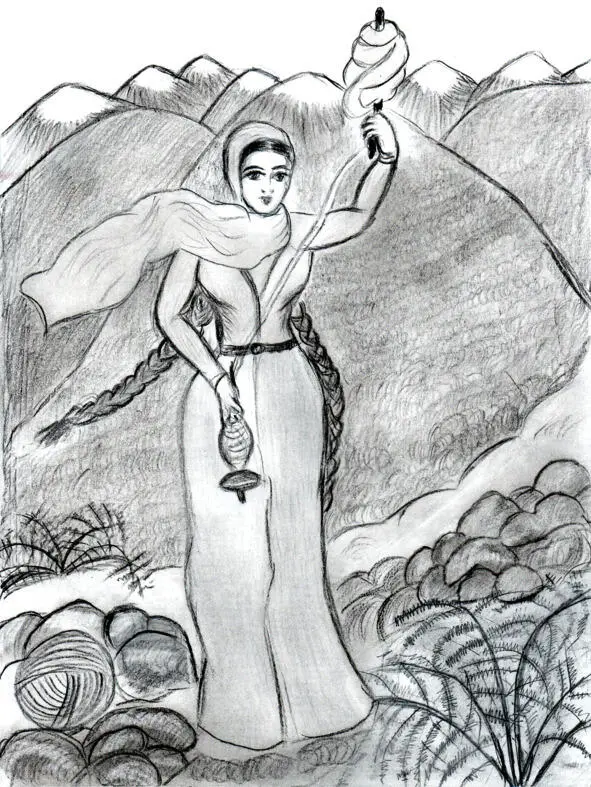
In the mythology of many cultures of the world, the spindle is an attribute of the Great mother who spins the thread of fate inside the Stone mountain or at the foot of the World tree. The spindle and all actions connected with spinning and sewing are symbols of life and continuity of time. On the other hand, the whirling spindle can be identified with the axis of the universe. The spindle acts also as a handicraft attribute of Satanay Gwasha, the mother of the Abkhazian Nart epic family consisting of 99 sons and one daughter who lived in the Caucasus Mountains. One of the Nart legends tells of Satanay-Gwasha who after awaking up early one morning, decided to spin yarn from the wool of six thousand sheep, and from that yarn she was going to weave cloth and tailor warm clothes for her ninety nine sons and one daughter. Before being engaged in handiwork, Satanay went to the wood and chose among the trees a straight one without boughs. She uprooted the tree and turned it into a spindle shaft. Then she chose a big rock and turned that rock into a whorl. Satanay attached the whorl to the thin end of the spindle for stability and the spindle started rotating in her hands. Holding the distaff in her left hand and the spindle from the huge tree attached with the stone whorl in her right hand, Satanay spun the wool of six thousand sheep on the first day. On the second day, she weaved the cloth from the yarn that she had spun from the wool of six thousand sheep. On the third day, she tailored clothes for her hundred children from the cloth that she had weaved from the yarn that she had spun from the wool of six thousand sheep. Thus Satanay Guasha, a caring mother and a craftswoman, was working at spinning, weaving, tailoring within three days and nights. Her work at spinning and weaving caused mighty rumble in the mountain gorges and shuddering of her huge house built of stone.
Legend about Gunda the Beautiful
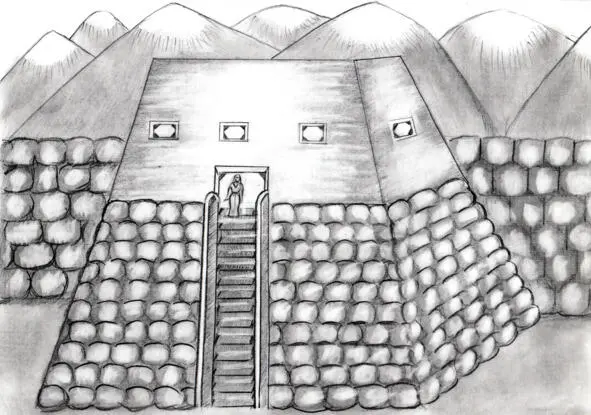
Gunda was the only sister of the 99 Nart brothers. She lived shining and glittering through night and day in a wonderful mirror like palace of a fortress. Gunda fed on only tender brains of high mountain-game.
Once when the Narts were absent on campaign, their jealous and cunning wives put a golden ring in Gunda’s food, hoping to get rid of her. Gunda, having swallowed the ring, fainted and was thrown into a dark cave. The cave began shining brilliantly, attracting the attention of a young prince who was hunting thereabouts.

On seeing a sleeping beauty with divine features in the cave, the prince fell in love with Gunda and soon married her. Over time, Gunda bore and raised a son, who very closely resembled her brothers. One day, Gunda’s son went to the water-spring with his golden pitcher to fetch some water and there he met the Narts who, noticing how like them the boy was, questioned him and before long realised who he must be. The Narts were happy to find their long-lost sister, whom they had sought throughout the entire world. Having learned all the truth about their wives’ wickedness, the Narts cruelly punished them. According to the legend, the wives were tied to wild horses’ tails, and their corpses were dragged along and torn to pieces.
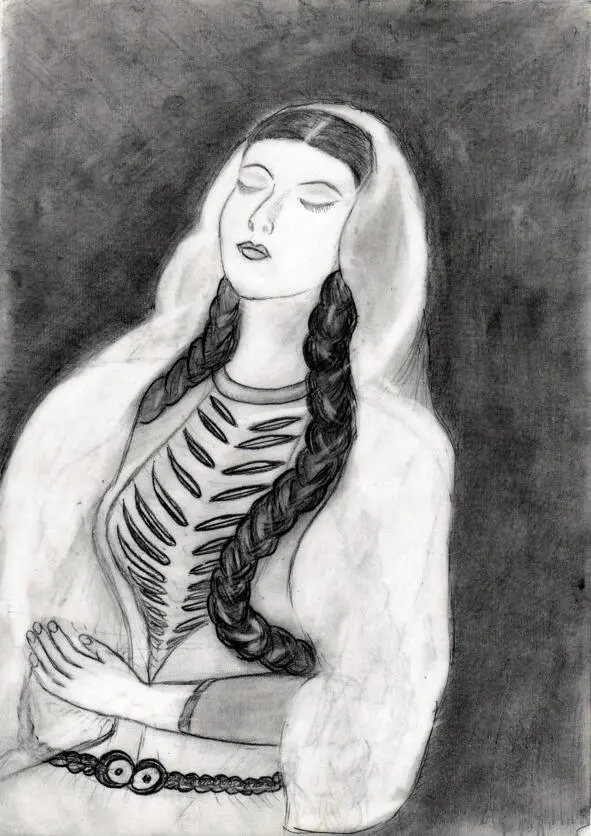
How Sasryqwa the Nart hero captured earth’s fire for the Narts
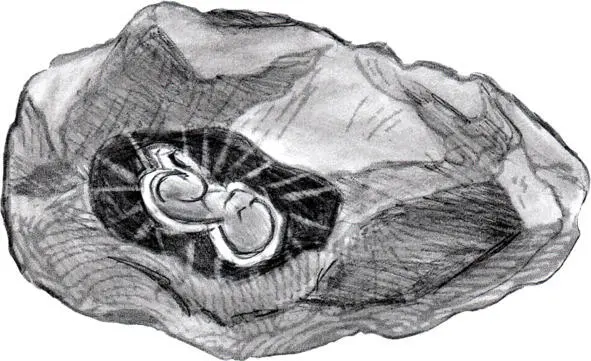
Sasryqwa the Nart hero was born supernaturally, being carved out of stone and tempered in a smithy. He sets out on many adventures; he tames a wild horse, conquers a voracious dragon in the Underworld Kingdom, and rescues people from misfortune. To warm up his frozen brothers, Sasryqwa twice acquired fire: on one occasion, he obtained heaven’s fire from the sky by shooting down a flaming star and at another time, Sasryqwa headed for the World’s edge, where, after fierce combat with a monster, he captured the earth’s actual fire for the Narts. However, his brothers referred to him as an illegitimate brother, envying his strength and fame, and, in the end, they caused him to perish.
Читать дальше
